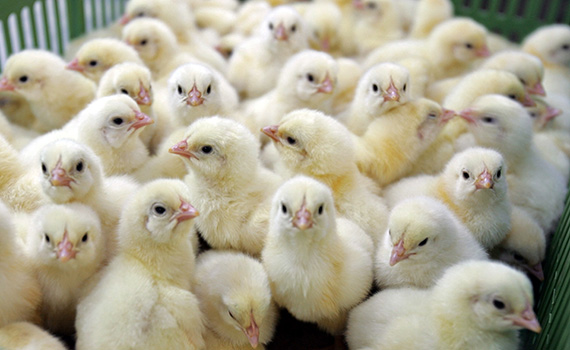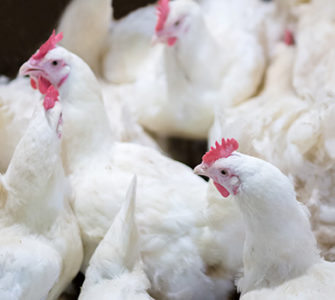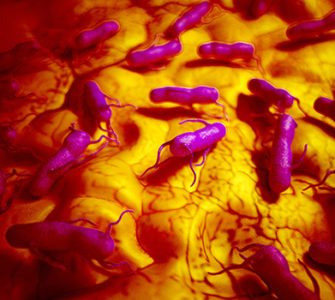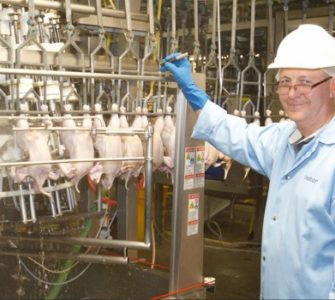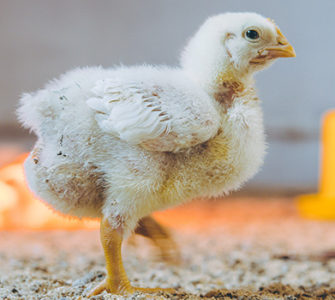Salmonella control in hatchery, second processing require special attention
Interventions for Salmonella control throughout the production process are essential, but special attention at the hatchery and during second processing at the plant are critical to success, panelists advised at a food safety roundtable.
Charles Hofacre, DVM, PhD, moderator and president, Southern Poultry Research Group Inc., said he has seen some “real disasters” in hatchery servicing rooms.
“The hatching process, in my mind, is probably the biggest area for intervention,” he said at the roundtable “Coming Together for Food Safety.”
“I think that’s very important, whether it be using hydrogen peroxide or some sort of fumigation…And obviously cleaning the hatchers after that process is finished, cleaning the conveying belts.”
John Smith, DVM, president, Alectryon LLC, and formerly with Fieldale Farms, agreed and said, “the hatchery is a huge bottleneck where you can really spread things around, so sanitation and control in the hatchery is paramount.” However, he stressed that Salmonella control efforts have to be carried through all the way to processing.
Important but difficult and expensive
![]() To really make improvements, a true, multi-hurdle approach is needed, Smith said, starting with a clean pullet and carried throughout live production. There’s got to be clean feed, clean drinking water, clean litter and equipment, and control of rodents, insects and other Salmonella vectors as well as biosecurity.
To really make improvements, a true, multi-hurdle approach is needed, Smith said, starting with a clean pullet and carried throughout live production. There’s got to be clean feed, clean drinking water, clean litter and equipment, and control of rodents, insects and other Salmonella vectors as well as biosecurity.
“These are all important, but none are easy,” he said. The cost and labor required to apply all these measures are why there’s a focus on vaccination of pullets and breeders and interventions in the hatchery such as fumigation.
Smith said he was involved with the design of a large, new hatchery that features a one-way flow pattern, with eggs coming in one end and chicks exiting the other. There are no cross-over paths, and there is an intervention step in each phase to break the cycle of infection.
“I think there are a lot of opportunities with our common, older T- or H-shaped hatchery designs for cross-contamination, and efforts to minimize those issues could be fruitful,” he added.
‘Can’t get clean enough’
Bruce Stewart-Brown, DVM, senior vice president, technical services and innovation, Perdue Farms, cautioned against assuming that if birds are clean at first processing, they’ll be clean on second processing.
“I thought you could get clean enough in first processing and not need to spend too much in second processing. I don’t believe that anymore. I don’t believe you’re going to be successful without spending significant money and energy in second processing. You can’t get clean enough,” Stewart-Brown said.
“There’s no guarantee you’ll do well with parts even if you’re in (USDA’s Food Safety and Inspection Service) Category 1 with whole birds. You’re going to have to spend money in both places,” he added, and noted that what to spend on first versus second processing has been a big and important topic in the industry.
Knock down Salmonella in chiller
However, Stewart-Brown also said scalders “can be fantastic at knocking down loads,” and that most really good, well-run chillers can reduce the Salmonella load by 1 or 2 logs.
Joshua Whitley, complex manager, Tyson Foods, echoed that view. “I think the chill process is probably the biggest opportunity we have to knock down the Salmonella load going into second processing.”
But he also said that “You can be clean on whole birds, then it’s a whole new challenge once you get to second processing. You’ve got several hands touching the bird when you think about full-hand debone. [There] just seems to be a lot more opportunity there to cross-contaminate.
“Once you come out of the chiller and start to break the bird up and go in various different directions and onto conveyers, you’ve got to make sure you have the right rinses, dips and things of that nature, but it’s definitely a challenge.”
Automation: friend or foe?
Stewart-Brown said there’s a big need for automation to reduce the number of hands that touch poultry during processing. “But is automation a step forward or backward for food safety? That’s the question. I don’t know the answer except that when I look at auto-deboners, they were not made to stay clean and are hard to clean.”
There’s a need to work with equipment to make it easy to clean. Each piece of equipment needs to be assessed for its food safety viability, he said.
Juan Devillena, director of quality assurance and food safety, Wayne Farms, cautioned that in the processing plant, what works in one place may not work in another.
“I personally have tried every chemical that you could possibly think of in different places. But at the end of the day, you cannot take an intervention that works in one particular plant or in one particular state and assume it’s going to work elsewhere,” he said.
“I once believed we had to have an intervention in the scalder because it worked where I was at originally. Well, at a different plant, it didn’t work at all — one reason was probably because the Salmonella serovars were different,” DeVillena said.
Food safety in the poultry industry, he added, is complicated but that’s what also makes it fascinating.
Read the rest of this article and download our “Coming Together for Food Safety” special report.
Posted on August 9, 2021



